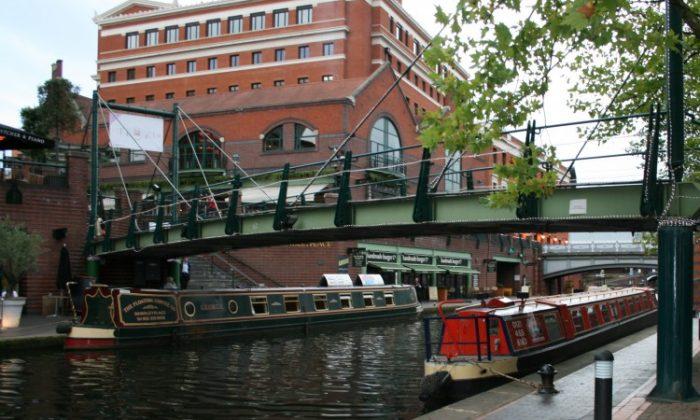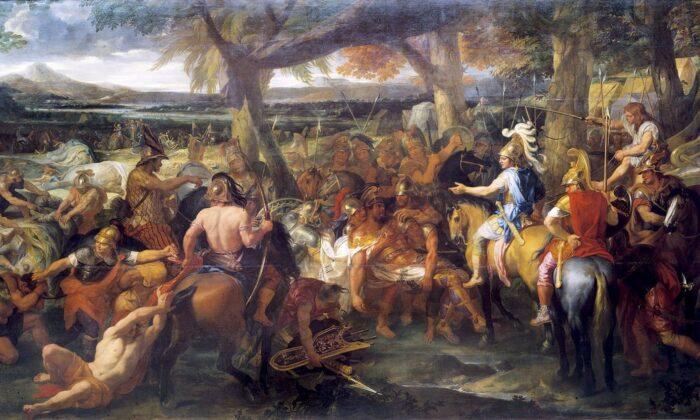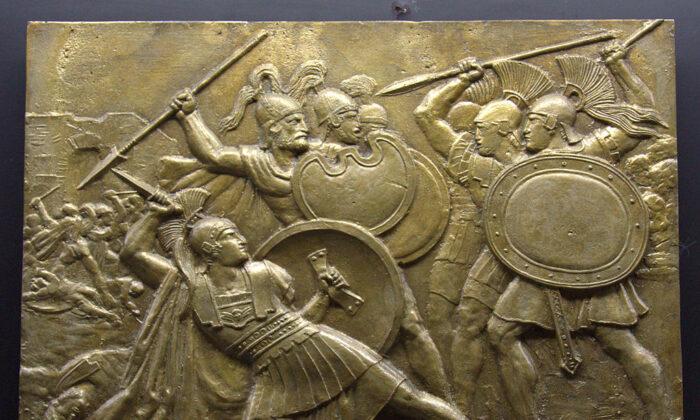
On the eve of the 2012 London Olympics, there is bound to be a renewed interest in visiting England. Travelers who are more intrepid should consider taking advantage of thousands of miles of canals on storied lands—particularly in and around England’s second-largest city—Birmingham.
To be honest, I am not an intrepid traveler, nor is anyone else who travels with a wife, a two-year-old, a five-year-old, and two in-laws. But, throw into the mix that my wife and in-laws are adventurous New Zealanders and that my father-in-law has already pulled off his own English canal boating experience (albeit without kids), and you have a date with Old England!
We flew into London, but never mind all the pre-packaged tours and London landmarks that everyone else is doing. Instead, we jumped in the miniest minivan I’ve ever been in and hit the highway for five hours.
Boating the Countryside
Finally, we reached the quaint Alvechurch Marina nestled in the English countryside of Worcestershire. We stayed the night in the boat docked at the marina and in the morning, we were given a demonstration of the ins and outs of canal boating. Our four-bed canal boat was a mere seven feet wide and an intimidating 54-feet long. It would have been a minor disaster to try maneuvering it in the 20-foot-wide canals, at first, had it not been for my father-in-law. Then again, bumping other canal boats and the canal banks is part of the excitement.We were off—though not as quickly as I anticipated! At top speed, the motorized canal boat only goes a quick walking pace, forcing me to leave behind my fast-paced daily routine. Whoever is driving the boat has to pay close attention to keeping it straight, constantly correcting the trajectory.

Canal boat steering is a skill necessary to cultivate and is enjoyable once you get the knack of it. On the last leg of the trip, my father-in-law had me guide the boat through a long pitch-black tunnel, which took about 40 minutes. The white-knuckle experience gave new meaning to “a light at the end of the tunnel.”
Simply put, canal boating is charming. We passed under centuries-old brick bridges and saw beautiful English countryside with quaint little cottages. The kids fed an apple to a friendly horse.
Because of the way the canals were built, we literally sailed over the land and roads at certain points, a surreal experience. Passengers could hop out and walk on the side paths that run parallel to the canal (where the horses used to pull).
Urban arrival
As we approached Birmingham, the idyllic scenery seemed to fade away. It began to feel less like the English countryside and more like we were sailing through people’s backyards—probably because we were sailing through people’s backyards. Also, for an interminable stretch, every inch of a wall on the side seemed to be covered in graffiti. While not far away from our boat, people slept in homes with beds, we were mooring on the side and turning out the light in the cold night. It gave the strange feeling that we were vagabonds pitching tents on the street.The veins of a great empire
These stranger urban canal moments were precious, though. Consider that the canals are deeply intertwined within England. The British Empire of the 19th century left a deep impression on the world, powered by the technological might of the Industrial Revolution, the ideals of Victorian England, and cultural giants like Charles Dickens. It was the largest empire in known history, covering one-fifth of the world. “The sun never sets on the British Empire,” the saying went.
The railroad only began to make a serious entrance in the late 19th century. The main mode of industrial transportation in England during this influential era was canals. Nearly 200 years later, canals haven’t gone anywhere. Like some parallel world stuck in the 19th century, they continue to exist alongside modern England.
The same ingenious lock technology from the 19th century is still there for you to use, as well. You ride your boat into a narrow chamber, push a giant lever to close your boat in, and then raise another to let the water from the next level raise your boat. Zero air pollution!
Exploring Birmingham
The great value placed on the canals today became apparent once we actually arrived in Birmingham, where shops, restaurants, and attractions line the canal and give the feeling of a British Venice. We took the kids to the National Sea Life Centre, which was more children-friendly and entertaining than any aquarium that I have ever been to in the United States. At night, my in-laws watched the kids while my wife and I strolled along the canal to Symphony Hall, Birmingham, where we saw the London Philharmonic Orchestra perform Beethoven and Schubert works. Afterward, we discovered Birmingham’s bustling nightlife. We crossed a picturesque bridge over the canal to a French café for dessert.The canal was just a short walk from downtown Birmingham, as well. While Birmingham is not considered architecturally exceptional among European cities, my sheltered American eyes were nonetheless dazzled by the beautifully ornate architecture and the way it was grandly incorporated into the city planning—feeling at times epic.
In one area, we visited the Birmingham Central Library and the Birmingham Museum of Art. These buildings sit on the circumference of a plaza among a mixture of buildings with modern and classic architecture. A small but richly ornate structure, like a mini cathedral with a fountain sits in the center of a large circular plaza. At one end, the circle opens and seems to pour into the city. As wide as streets in America, there were wide brick-paved walkways lined with shops.
I couldn’t help but think of the crowds tightly squeezed on sidewalks in SoHo back in New York City where the lack of city planning precludes the exaltation of the truly great architecture that America still has left.
If canals are the veins of England, then Birmingham is quite possibly the heart.







Friends Read Free